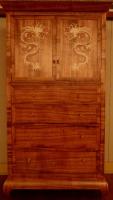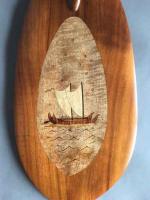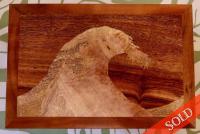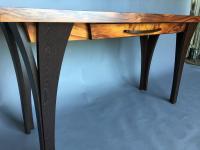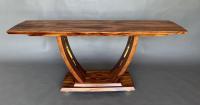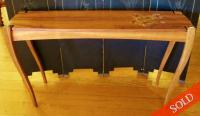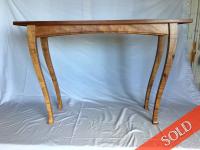David & Doni Reisland
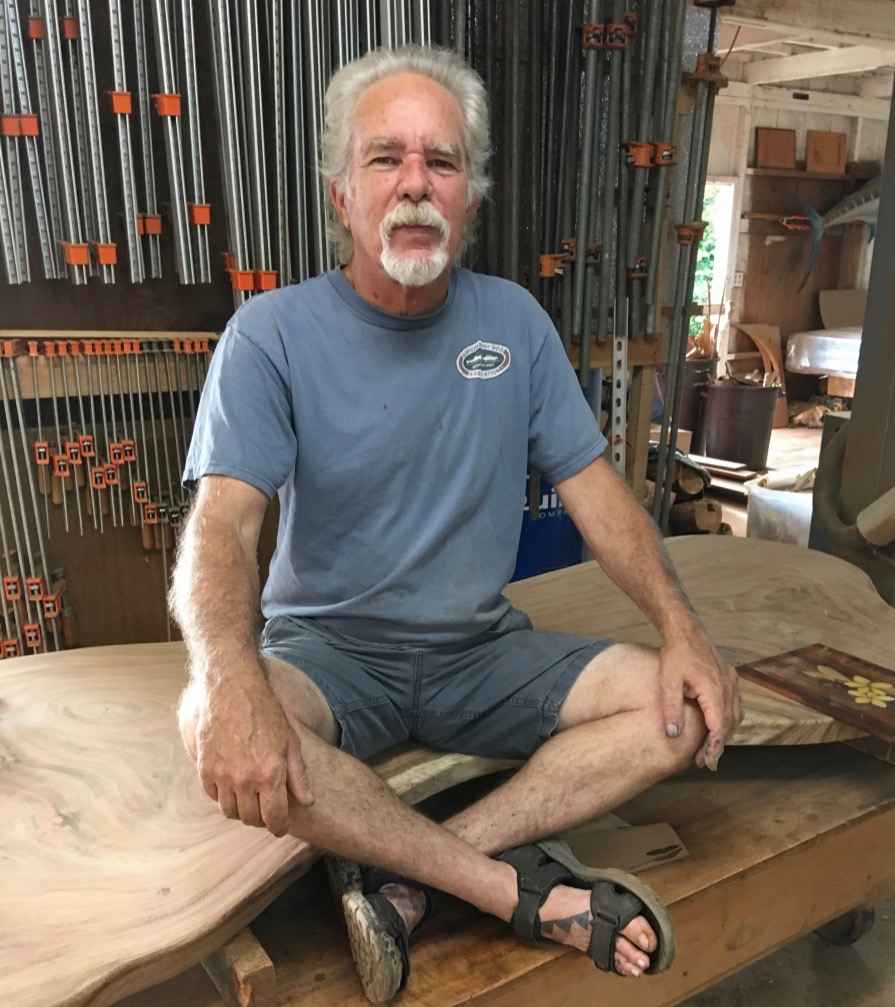
As a fifth-generation woodworker, I figure it was my destiny to make custom furniture and perfect my marquetry skills. But not long ago, I learned that my connection to wood and artistry goes even deeper.
My brother traveled to Germany and did some research, and it seems the skills I have go back even more generations. The Reislands, which is a rare name, was the traveling tinkerers of southern Germany—we repaired everyone’s broken possesions. I never understood how I just knew how to do new techniques I’d never done before. Now I do—it’s in my DNA!”
The precision and artistry of my marquetry call for incredible patience and skill. For decades, I’ve been working with the tiniest pieces of wood, painstakingly laying them onto dining room tables, hall tables, and blanket chests to create stunning images. And I’m still learning. I keep pushing the medium: more and more parts, smaller and smaller parts, more shading. I have to decide for each piece which way the grain needs to go; is the figure of the grain right the way I’ve positioned it? The technique I use is known as double bevel marquetry—I cut one piece (at an11 degree bevel) at a time into the background, then the next one so it nests into the first piece, and so on. Marquetry is extremely complex.
I have pushed the medium to what I call “the point of blasphemy,” and I’m only partly joking. “Lately my art has moved to the wall—taking my marquetry to two dimensions and using transparent toners on it. I like the scenes I’m able to create with the marquetry, and then I use transparent paints over the top to enhance the natural colors and bring out the figure in the grain. Adding color is blasphemy to the traditional marquetry artist. It’s a completely new technique.
The toners allow me to achieve something I’ve been trying to do for years: recreate brightly colored fish such as mahi-mahi, marlin, and ahi, and tropical flowers. “Natural wood tones didn’t do them justice. Now I use curly mango, which has lots of flecking,” he continues. “Those flecks reflect through the paints beautifully. For the mahi-mahi, I’m able to develop the gold color on the bottom of the fish, blue on top, and green in the middle with all the little spots. For the flowers, using figured wood adds to the depth and feel of what might be an ordinary image. This feeds my creativity and fulfills that need in my life.
As I work alone, I don’t notice how much my work is evolving. “I don’t know how it just does; I’m always striving to get the lines better. I had a fantastic art teacher in junior high school—Mr. Guest—who opened my eyes to art and what I was capable of. And then I met and learned marquetry from Silas Kopf. I haven’t stopped since.”
As an artist, it takes so much to get to this point. I’ve put in the years, and even though it’s in my DNA, it’s not easy work. This life takes dedication. The artistry involved requires time, tools, talent and years of experience. And to be an artist, I need the people who believe I can create their dream. What I create seems to bring people joy. It definitely makes me happy.



